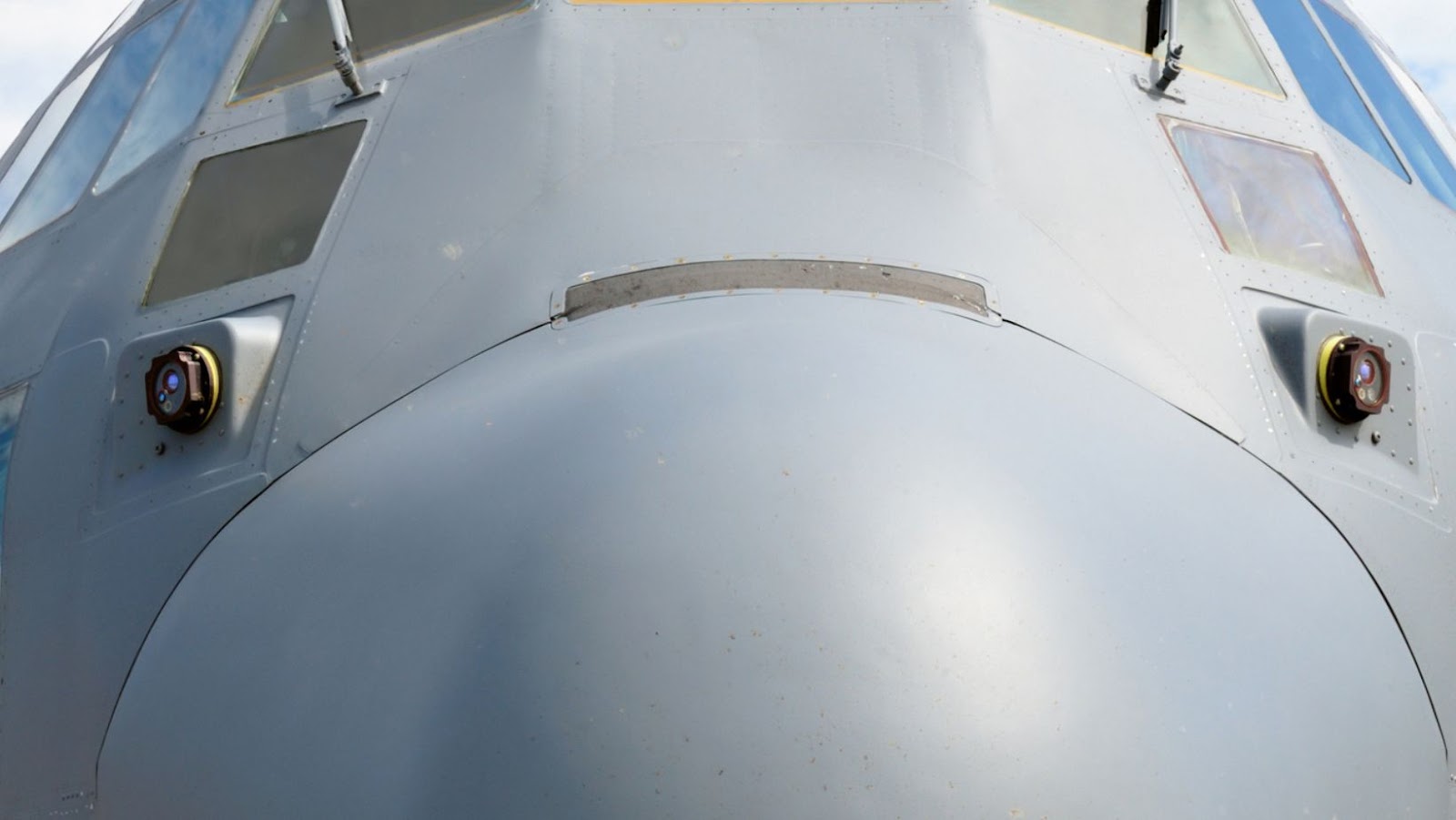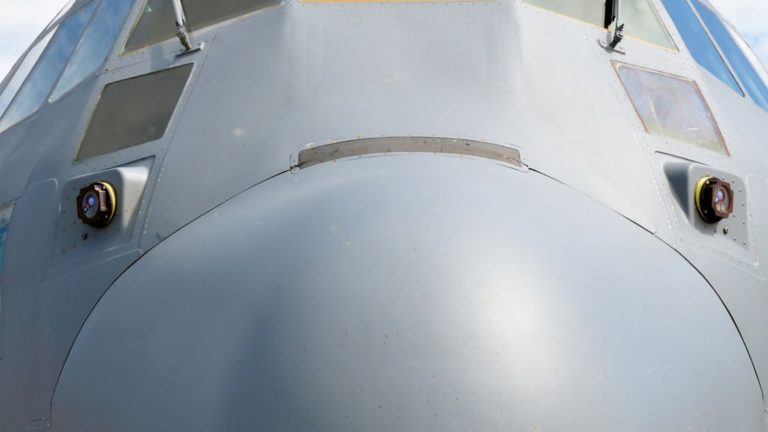 Are you concerned about landing an aircraft safely?
Are you concerned about landing an aircraft safely?
Unravel the mystery of codes and their role in helping pilots land with this informative article. Discover how codes provide guidance for landing aircraft, so you can trust your journey will be a smooth one.
VAGUS888
The heading and title both pose the same question about codes guiding aircraft landing. However, the context of this question is not clear.
If you’re referring to the codes uncovered by the black box following a crash incident, then they do not offer instructions for landing the aircraft. The codes from the black box serve as flight data recorders which could be useful in determining the cause of a crash or incident.
Yes, certain codes in the aviation industry do help pilots with landing the aircraft. These codes, such as the Instrument Landing System (ILS), Visual Approach Slope Indicator (VASI), Precision Approach Path Indicator (PAPI), and Standard Terminal Arrival Route Procedures (STAR), provide guidance for safe landing. They comprise various signals transmitted to the pilots to assist them in their task.
The black box codes are recorders of the flight data which might help in understanding the cause of the crash or incident.
YLSUNDO
Guiding aircraft during landing is a vital part of aviation safety. This consists of a series of codes that give pilots the requisite guidance for a plane’s landing. These codes offer the essential directives for a safe and secure landing. However, to be effective, certain subtleties need to be considered.
This article will delve into how these codes guide the safe and systematic landing of an aircraft.
Importance of Landing Guidance
Guidance for landing is a crucial element of aviation safety, indispensable for pilots during aircraft touchdown. The systems and codes employed for this purpose help steer the aircraft during landing, contributing to a safe arrival.
The Precision Approach Path Indicator (PAPI), which is a sequence of lights indicating if the aircraft is flying at the appropriate angle during landing, is an example of landing guidance. Another instance is the Visual Approach Slope Indicator (VASI), which utilizes a mixture of red and white lights to signal the pilot if the approach is excessively low or high.
Landing guidance systems are crucial for aircraft safety as they assist pilots in maintaining correct alignment, altitude, and speed during landing. By reducing the risk of accidents, they ensure the safety of both passengers and crew. Hence, for a safe aircraft landing, the role of landing guidance is vital.
Helpful hint: To guarantee a safe landing, always adhere to the landing guidance procedures given in the aircraft manual and follow the instructions from air traffic control.

EROHRUA
Landing codes are essential in giving pilots precise guidance during an aircraft’s landing process. These codes, a sequence of light signals placed at the runway’s side, assist pilots in identifying their exact position in relation to the landing zone.
Here’s an explanation of the various kinds of landing codes and their meanings:
- Red light: This code signifies that landing should not be attempted by the pilot and a go-around must be executed instead.
- This code, white light, signals that the aircraft is correctly aligned with the runway and is on the right glide path.
- This code, represented by an amber light, signifies that the aircraft is at an excessive altitude and needs to descend more to properly align with the runway.
- Green light: This code signals that the plane is flying too low and needs to raise its altitude to align with the runway.
Pilots are given crucial information to guide them during landing through landing codes, ensuring a safe and smooth landing experience.
Aircraft landing guidance is a critical aspect of aviation safety. It consists of a set of codes that provide pilots with the necessary guidance for landing a plane.
CVEABRB
Airport runway visual range (RVR) and runway lighting, collectively known as landing guidance codes, are crucial in assisting pilots to land safely under various weather conditions.
The landing guidance codes used by airports are determined by the following factors:
1. Instrument Landing System (ILS): ILS is a radio navigation system used to guide aircraft during the approach and landing phase. Airports with ILS installed use different RVR and lighting codes than those without ILS.
2. Weather conditions: RVR and lighting codes are determined by prevailing weather conditions such as fog, snow, and rain. The worse the weather, the shorter the RVR and the more intense the lighting required.
3. Runway surfaces: The type of surface, such as asphalt or concrete, affects how much lighting is needed to guide pilots during landing.
Pro Tip: Familiarise yourself with the different types of landing guidance codes and be aware of how they might change depending on weather conditions and airport infrastructure. This will help you better understand the landing process and become a safer and more informed passenger.
TUDIOCAQ
The process of landing an aircraft is intricate and necessitates specific instructions to guarantee the safety of both the aircraft and its passengers.
This article will delve into the various types of aircraft landing guidance codes, which serve to instruct and guide pilots for correct aircraft manoeuvring during landing.

XXXLUTCZ
Landing Guidance Codes are a universal system of symbols and markings used to give pilots vital guidance and information during the landing procedure. These codes are not designed to direct the physical landing of the aircraft, but rather to inform the pilot about pertinent runway and weather conditions.
The main types of landing guidance codes consist of:
The Runway Visual Range (RVR) refers to the distance a pilot can visualize down the runway during landing approach. RVR codes, which are represented by a two-digit number, measure this distance, which can range from 0 to 5500 meters.
The Surface Movement Guidance Control System (SMGCS) is a set of codes that offers pilots vital information about the airport’s physical layout, including details about taxiway and runway markings, as well as any potential obstructions.
The Instrument Landing System (ILS) is a set of codes that assist pilots in navigating their approach to land under conditions of poor visibility. This system comprises of glide slope and localizer indicators.
Although landing guidance codes do not directly guide aircraft landing, they play a crucial role in guaranteeing secure and successful landings. They equip pilots with necessary information for making informed decisions throughout the landing process.
VG2279Q
Standardised aircraft landing guidance codes are systems used to give pilots essential information about runway conditions and approach procedures.
Pilots rely on four different types of landing guidance codes during various phases of landing:
1. Visual Approach Slope Indicator (VASI): This landing guidance code uses a system of lights to indicate to pilots whether they are too high, too low, or on the correct glide path for a safe landing.
2. Precision Approach Path Indicator (PAPI): Similar to VASI, PAPI uses a system of lights. However, this system is optimised for lower visibility and is used mostly for instrument approaches.
3. Instrument Landing System (ILS): A radio signal system that provides horizontal and vertical guidance to pilots during the final stages of landing.
4. Microwave Landing System (MLS): A newer technology that provides pilots with more accurate and reliable landing guidance, including precise altitude and course information.
Although these codes do not instruct on how to land the aircraft, they supply pilots with vital information for a secure landing.
These codes are displayed on the instrument landing system (ILS) or the precision approach radar (PAR) and consist of letters and numbers that indicate the aircraft’s position relative to the runway.
GHDYFOQ
Guidance codes for landing give pilots necessary information during the approach and landing stages of a flight, assisting them in safely landing the aircraft. These codes, comprised of letters and numbers that show the aircraft’s position in relation to the runway, are shown on the instrument landing system (ILS) or the precision approach radar (PAR).
The codes function in the following manner: The initial section of the code signifies the aircraft’s location on the glide path. For example, “A” signifies that the aircraft is above the glide slope, “B” indicates it is slightly above, “C” represents it being on the glide slope, “D” shows that it’s marginally below, and “E” denotes that it’s significantly below.
The aircraft’s lateral position is indicated by the second part of the code. For example, “L” signifies that the aircraft is to the left of the centerline, “C” signifies that it is on the centerline, and “R” signifies that it is to the right of the centerline.
These codes can be utilized by the pilot to modify the aircraft’s speed, altitude, and direction in order to align with the runway and ensure a safe landing.

UMIT693
UMIT693 is not a code used to guide the landing of aircraft. Rather, it is a code utilized for the identification of a particular aircraft during communication between pilots and air traffic controllers.
The global aircraft identification system includes aircraft codes, which enable pilots and air traffic controllers to differentiate between various planes sharing the same airspace. UMIT693 is a sample of the numerous codes allocated to different aircraft.
Pilots adhere to a range of procedures and guidelines for safely landing an aircraft, which vary according to the specific aircraft and situation. These procedures encompass conducting pre-landing checks, keeping an eye on weather conditions, and adhering to approach and landing protocols.
To summarize, although aircraft codes such as UMIT693 are crucial for efficient communication, they do not offer instructions for landing or flying an aircraft.
Pro Tip: Always follow established procedures and guidelines when piloting or landing an aircraft for maximum safety.



